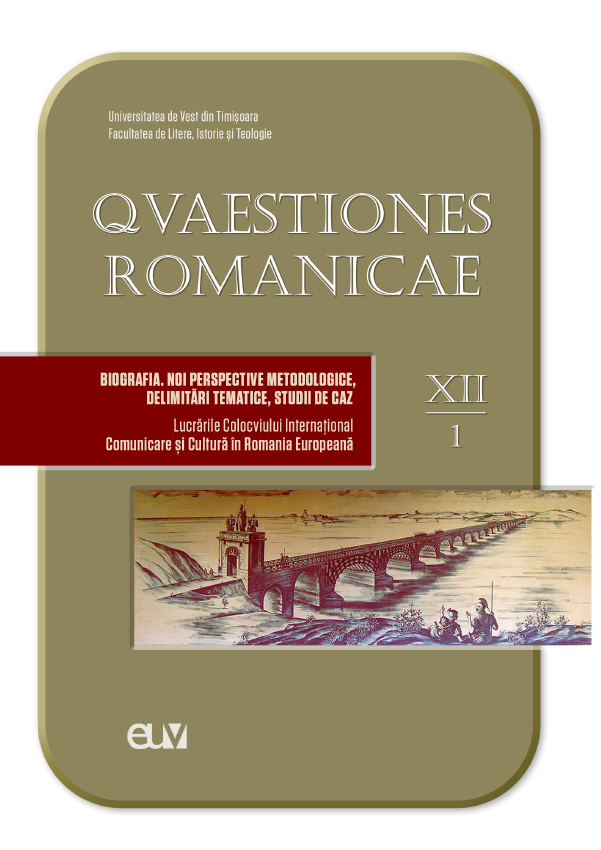L’Évangile selon Amélie : autobiographie apocryphe d’un Personal Jesus
Abstract: (The Gospel according to Amélie: the apocryphal autobiography of a Personal Jesus) Jesus has never attracted as much interest as he does today, his understanding and portrayal in religious consciousness and literary works making him a central historical figure in Western culture. The search for the "real" Jesus has led to the creation of a Jesus who is a prophet, a hippy, a revolutionary, a feminist and a philosopher, even a Hegelian, a proto-communist and a positivist. In the face of such diversity, it is difficult to discern which is the most faithful. Its mystery remains two thousand years later. But the challenge, particularly for historians, is to present a Jesus who is conceivable, even possible, a Jesus whose portrait has been scrupulously verified by an in-depth analysis of the sources, going beyond the dogma of the "Christ of faith". To create a creative, original and captivating work, contemporary writers must free Jesus Christ from his role as an "antitype", linking him to two major figures, Moses and Elijah, and position him as a conceptual figure or a problematic hero. Contemporary authors are endeavouring to separate morality from theology, with the aim of distinguishing the "historical Jesus" from the "dogmatic Christ", by exploring the unexplained areas of the Gospels, not from a hagiographic but rather from an apocryphal perspective. Their writings focus on the man Jesus in order to question, through an exegetical approach, the multiple roles traditionally associated with his figure. The protagonist of their stories is therefore not Christ, but Jesus, often a "personal Jesus", as evoked in the Depeche Mode song. To illustrate the significance of this syntagm, which seems to encompass the contemporary trend, we aim to study the biblical transposition of the Passion of the Christ in the interior monologue of Jesus in Amélie Nothomb’s novel Thirst (2019).
Keywords: Jesus Christ, apocryphal autobiography, hypertextuality, Thirst, Amélie Nothomb.
Résumé : Jésus n’a jamais suscité autant d’intérêt qu’à présent, sa compréhension et sa mise en scène dans la conscience religieuse et les œuvres littéraires en font une figure historique centrale de la culture occidentale. La quête du « véritable » Jésus a entraîné la création d’un Jésus prophète, hippie, révolutionnaire, féministe et philosophe, voire hégélien, proto-communiste et positiviste. Face à cette diversité, il est difficile de discerner lequel est le plus fidèle. Son mystère demeure encore deux mille ans après. Mais l’enjeu, en particulier pour les historiens, est de présenter un Jésus envisageable, voire possible, un Jésus dont le portrait a été scrupuleusement vérifié par une analyse approfondie des sources, au-delà du dogme du « Christ de la foi ». Pour créer une œuvre créative, originale et captivante, les écrivains contemporains doivent affranchir Jésus-Christ de son rôle d’« antitype », le liant à deux figures majeures, Moïse et Élie, pour le positionner comme un personnage conceptuel ou un héros problématique. Les auteurs contemporains s’efforcent de séparer la morale de la théologie, dans le but de distinguer le « Jésus historique » du « Christ dogmatique », en explorant les zones non explicitées des Évangiles, non pas dans une perspective hagiographique, mais plutôt apocryphe. Leurs écrits se concentrent sur l’homme Jésus afin de remettre en question, à travers une approche exégétique, les multiples rôles traditionnellement associés à sa figure. Le protagoniste de leurs histoires ne sera donc pas le Christ, mais Jésus, souvent un « Jésus personnel », comme évoqué dans la chanson de Depeche Mode. Pour illustrer la signification du syntagme qui semble englober la tendance contemporaine, nous nous proposons d’étudier la transposition biblique de la Passion du Christ dans le monologue intérieur de Jésus du roman Soif (2019) d’Amélie Nothomb.
Mots-clés : Jésus-Christ, autobiographie apocryphe, hypertextualité, Soif, Amélie Nothomb.
